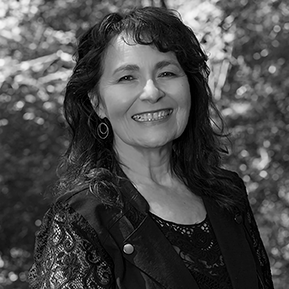Cadastre, Apostle Islands
I.
A soap-opera rising and sinking of bodies,
melt of glaciers, flamboyant sculpture of waves—
west wind at thirty knots—
this serial archipelago the drama of centuries.
Forgotten Steamboat Island
swallowed like the sunken ships—
one episode of tide and time,
now another buried underwater treasure.
How to plat the ancient—27,232 submerged acres;
mark or name the temporary—newly formed seastacks,
shifting sand spits and tombolos?
Imagine the geared toy of evolution:
twenty-two islands swimming in 40 degrees, in aqua,
honeycombed with vaulted chambers, with caverns
whose deeply carved crevices house whisper
and splash, echo cormorant and eagle scree
(breeding habitat for 150 bird species)
harbor the keening of human loss—
distress signals at 2:05 a.m..
How to measure this littoral expanse—man miles or
decibels of the drum-like surf on mythic Devils isle?
Imagine henna wheat copper buff and umber arches—
this billion year old layered sandstone rises
red and cathedral gothic
at Swallow’s Point, Mawikwe Bay.
Yes, each epoch a burnished stratum, a wave of color.
We flat map with metes and bounds—Manitou Island,
Hermit, Ironwood—trace ownership in treaties and deeds,
but cannot account each mystic transformation:
the graceful circumference of wind twists in white pine,
or how the friction of time and waves shape song—
emitted frequency 450 Hertz.
My feet a plectrum on the quartz lyre of Stockton Island
this globular singing sand is nature’s genius,
the whistle, squeak, or eerie bark—ephemeral.
II.
Beyond flat fact Apostle Island histories overlap, stack
like horse skeletons at the bottom of each ravine:
the glimpse of steamer spines in clear water,
the sunken and mummified hemlock and birds-eye maple—
salvage logs now kilned and carved to fine-grained guitars.
The past is hollow bellies of Anishinaabeg canoes
is the echo of old names and weighted fill of rocks—
birch bark given to winter waters for preservation.
The piled stone, the stories—Midewiwin lodges,
Voyageurs and fisheries, lighthouses and loggers—
trace another measure, paint the palimpsest of place.
Among abandoned brownstone quarries on Basswood Island
each cubed hollow the math of absence and distance—
of courthouse buildings rising square by brown square
in mainland cities like Bayfield and Milwaukee.
This beanstalk-tall barter is also loss:
of peerless brown furs
traded to drape bodies of moneyed matrons,
or 500 million board feet of disappearing timber each year.
When history is a bedlam of John Jacob Astor commodity
and weather a storied purple destiny of ships run aground,
who can name island gods or number sands on Raspberry,
Otter, Gull, and Oak?
How ruler each breathless angel edge
of ledge rock, record equation for velocity of change,
mirror the fetal scroll of fiddlehead ferns—
or praise with proper song each turtle-shaped survival?
Copyright © 2016 by Kimberly Blaeser. This poem was commissioned by the Academy of American Poets and funded by a National Endowment for the Arts Imagine Your Parks grant.
"Watery islands resist measurement. Likewise, their histories. The current count of twenty-one islands that make up the Apostle Islands National Lakeshore, does not include the islands submerged over the passage of time nor does it include Madeline Island, the traditional ceremonial site for the Anishinaabeg. Indeed, the vital archipelago is change incarnate. I wanted to suggest the layered palimpsest of history here, to gesture in the poem to the literal buried bodies of ships and sailors and horses, and birchbark canoes, but also to the submerged histories including that of ecological devastation through fur trade, logging, and quarry mining. And yet, the islands also embody adaptation and survivance—their immeasurable beauty includes cliffs and pillars and arches formed over centuries, and trees turned into corkscrew shapes by wind. Like most natural places, they also house mysteries—here the 'singing sand' and the lulling transformation of visitors to these ancient island outposts. Transience never sits neatly in records—how do we map becoming? The challenge is similar to that of poets searching for the buttress of language amid the ineffable."
—Kimberly Blaeser

